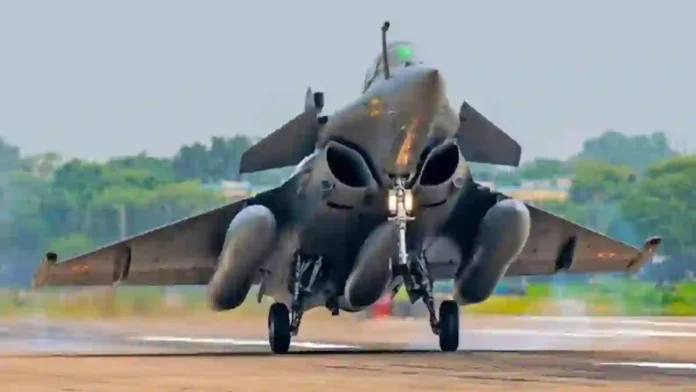The Ministry of Defence has officially received the Indian Air Force’s (IAF) bid for the acquisition of 114 ‘Made in India’ Rafale fighter jets, a mega-proposal estimated to be worth over ₹2 lakh Crores. This procurement would be executed under the strategic partnership model, with Dassault Aviation partnering Indian aerospace manufacturers such as TATA, and is targeted to achieve more than 60% indigenous content.
The IAF submitted its Statement of Case (SoC) a few days ago, and the proposal is undergoing inter-ministerial scrutiny across Defence Finance and related wings. Once reviewed, it will move to the Defence Procurement Board (DPB), chaired by the Defence Secretary, before deliberation by the Defence Acquisition Council (DAC) chaired by the Defence Minister.
If cleared, this would become the single largest-ever defence contract signed by India, surpassing even the earlier ₹59,000 crore government-to-government deal for 36 Rafales.
With the induction of these additional 114 fighters, India’s Rafale fleet would expand to 176 aircraft, factoring in the 36 jets already operational in the IAF and the 36 Rafale-M fighters contracted for the Indian Navy.
Collectively, this would establish Rafale as a core pillar of India’s frontline combat air-power alongside the Su-30MKI and upcoming indigenous fighter lines.
Dassault is also expected to establish a Maintenance, Repair and Overhaul (MRO) hub for the Rafale’s M-88 engines in Hyderabad, ensuring long-term sustainment of the fleet with Indian industry participation.
Strategically, the Rafale has earned strong credibility within the IAF after its operational debut during Operation Sindoor, where it reportedly outperformed adversary systems and successfully countered China’s PL-15 long-range air-to-air missiles by leveraging its Spectra electronic warfare suite.
Read- Trump Tariffs Threaten To ‘Destroy’ 25 Years of US-India Partnership, Warn Former Diplomats
The proposed Indian Rafales would feature additional enhancements, including longer-range air-to-ground strike weapons beyond the current Scalp cruise missile, which proved effective against Pakistani military and terrorist infrastructure during operations. This capability leap underscores India’s intent to ensure superiority in contested airspaces across the Western and Northern borders.
The timing of this proposal reflects growing urgency within the IAF to arrest its declining squadron strength amid rising regional threats.
With a sanctioned strength of 42 combat squadrons, the IAF currently operates around 30–31 serviceable squadrons, relying heavily on its Su-30MKI fleet and gradually inducting the planned 180 TEJAS MK-1A jets.
The 114 Rafales are set to provide not only immediate operational reinforcement but also a technological bridge until India’s indigenous Advanced Medium Combat Aircraft (AMCA) enters mass production post-2035.
India’s localisation push in fighter aircraft production is expected to cascade into wider aerospace benefits. Indigenous integration would cover fuselages, avionics contributions, and component manufacturing across multiple suppliers, further supported by MRO and spares infrastructure.
The ‘Made in India Rafale’ program, therefore, is positioned not just as a military acquisition but as a strategic industrial investment that will deepen Indo-French defence ties and boost India’s aerospace ecosystem in line with Atmanirbhar Bharat objectives.
Based On PTI Report
Agency




